Whether it comes from staring at Michelle Obama’s toned upper arms on TV, or shopping for the skimpy sleeveless fashions that crowd women’s clothing stores, one thing is certain: more and more women are looking for options to surgically tone and contour their upper arms when diet and exercise fail.
Brachioplasty, which is a surgical procedure designed to reduce excess skin and fat from the upper arms, has gained a tremendous jump in popularity over the past year according to the American Society of Plastic Surgeons (ASPS). Since the year 2000, the procedure has jumped 4,378%, with over 15,000 women electing for the surgery in 2012. While the procedure does come with a large scar on the inside of the arm, it is often considered worthwhile for the massive weight loss patient left with skin laxity that exercise and diet cannot fix. Many patients find that after all the hard work of losing weight, they still want to be able to show their arms with confidence and wear smaller clothing. The scar is a trade-off most are willing to accept, with 84% of patients on the popular cosmetic surgery site RealSelf citing satisfaction with the procedure.
With numbers so huge, I decided that the next surgery I blogged about, after the breast augmentation with Dr. Herluf Lund, would have to be brachioplasty with Dr. William Huffaker.
Please note, the images below do show an actual surgery and may contain material that some might find offensive.
Because brachioplasty (also known as an Upper Arm Lift) is done under general anesthesia but doesn’t require an overnight stay, once again we were at Manchester Surgery Center in Des Peres, MO.
The patient, a weight loss patient who had lost over 100 pounds, arrived an hour and a half before surgery. Before he scrubbed in, Dr. Huffaker made some preliminary markings on the patient’s arm. For this procedure, the incision began in the arm pit and extended down to the elbow.
Once the patient was anesthetized and prepped, Dr. Huffaker made the initial incision along the lines he drew.
A look at the incision a bit more opened up.
In the video below, Dr. Huffaker dissects tissue around the arm.
Once the dissection of the tissue around the arm was done, Dr. Huffaker measured and trimmed off excess tissue, careful not to take off too much skin, which would cause tension.
The distal tissue (tissue further away from the heart) was trimmed off first, then the proximal tissue (tissue closer to the heart, further up the arm) was trimmed off next.
After the tissue along the upper arm was excised, Dr. Huffaker focused on the axillary, or arm pit tissue. The brachioplasty incision is actually not a straight line, but more of an L-shape.
Brachioplasty requires drain insertion, which helps evacuate the extra fluid that accumulates after surgery. A trocar, a sharply pointed medical instrument, is used to guide the drains in. Dr. Huffaker cut the trocar off after the drains were properly inserted. Most drains are removed in about a week at our St. Louis office.
The tissue excision complete, you can see the “L-shape” before Dr. Huffaker began to suture the wound closed.
Patients are always curious about how much tissue is actually taken out, and how much it weighs. Below is what was removed from the right arm, the total weight coming to less than two pounds.
After Dr. Huffaker and his team closed the incisions, the patient was taken into recovery and she went home that day. Thank you Dr. Huffaker for allowing me to watch this amazing transformation!
Questions about brachioplasty? Feel free to ask us here, or call our office at 636-530-6161.
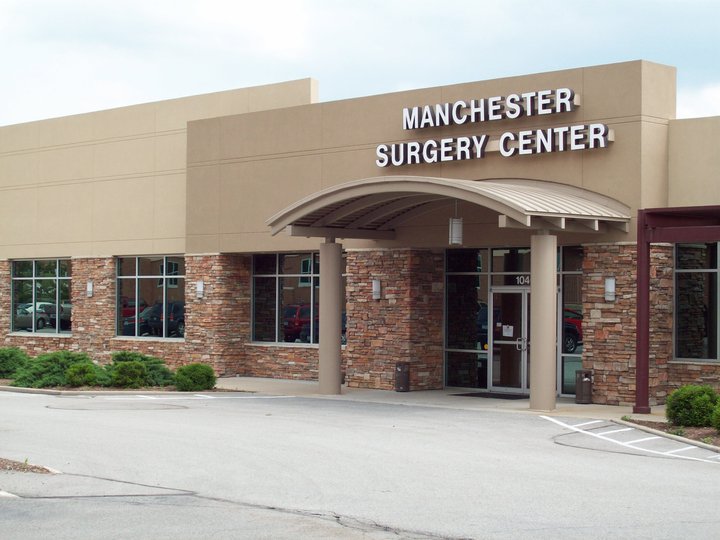
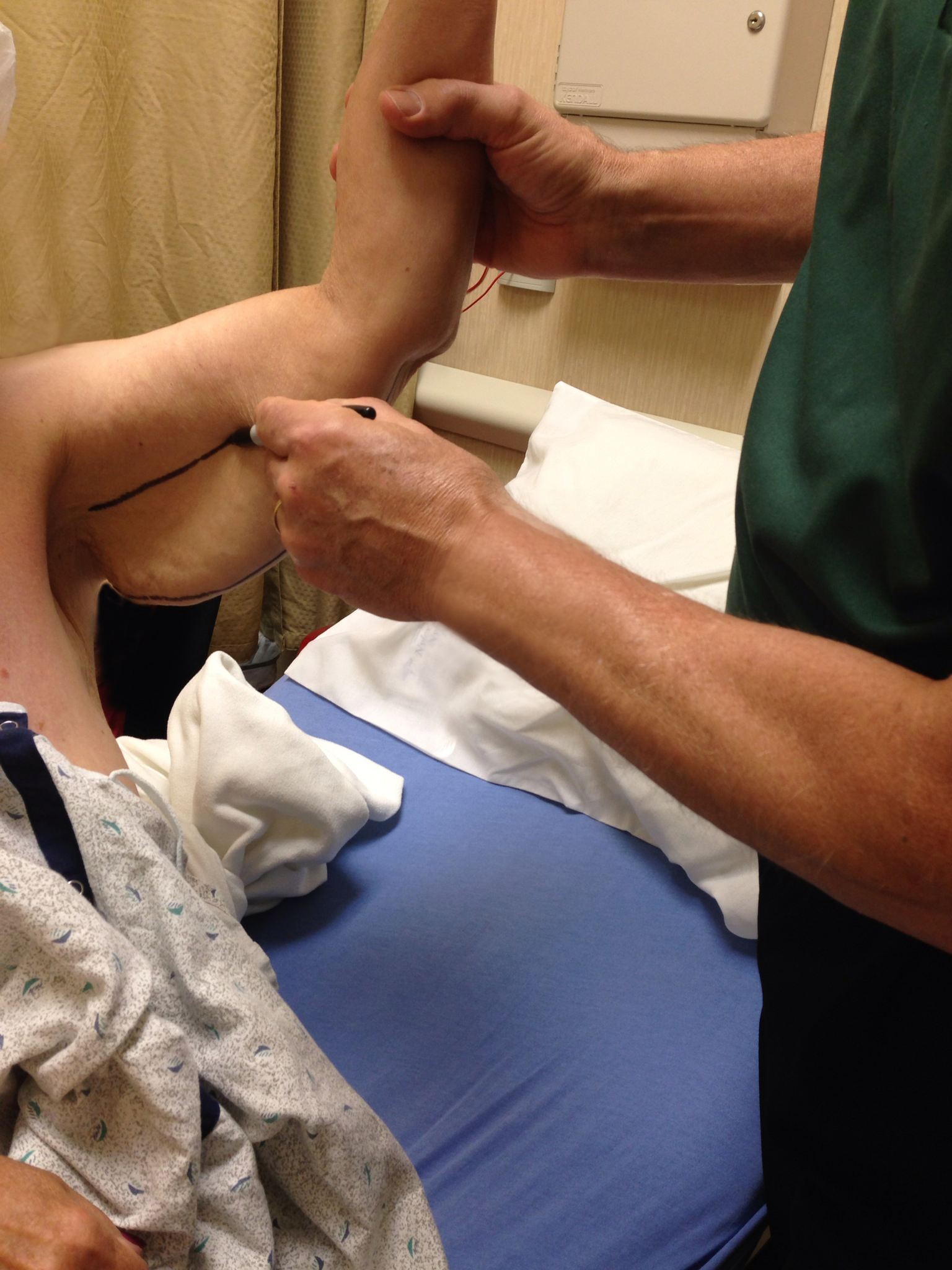
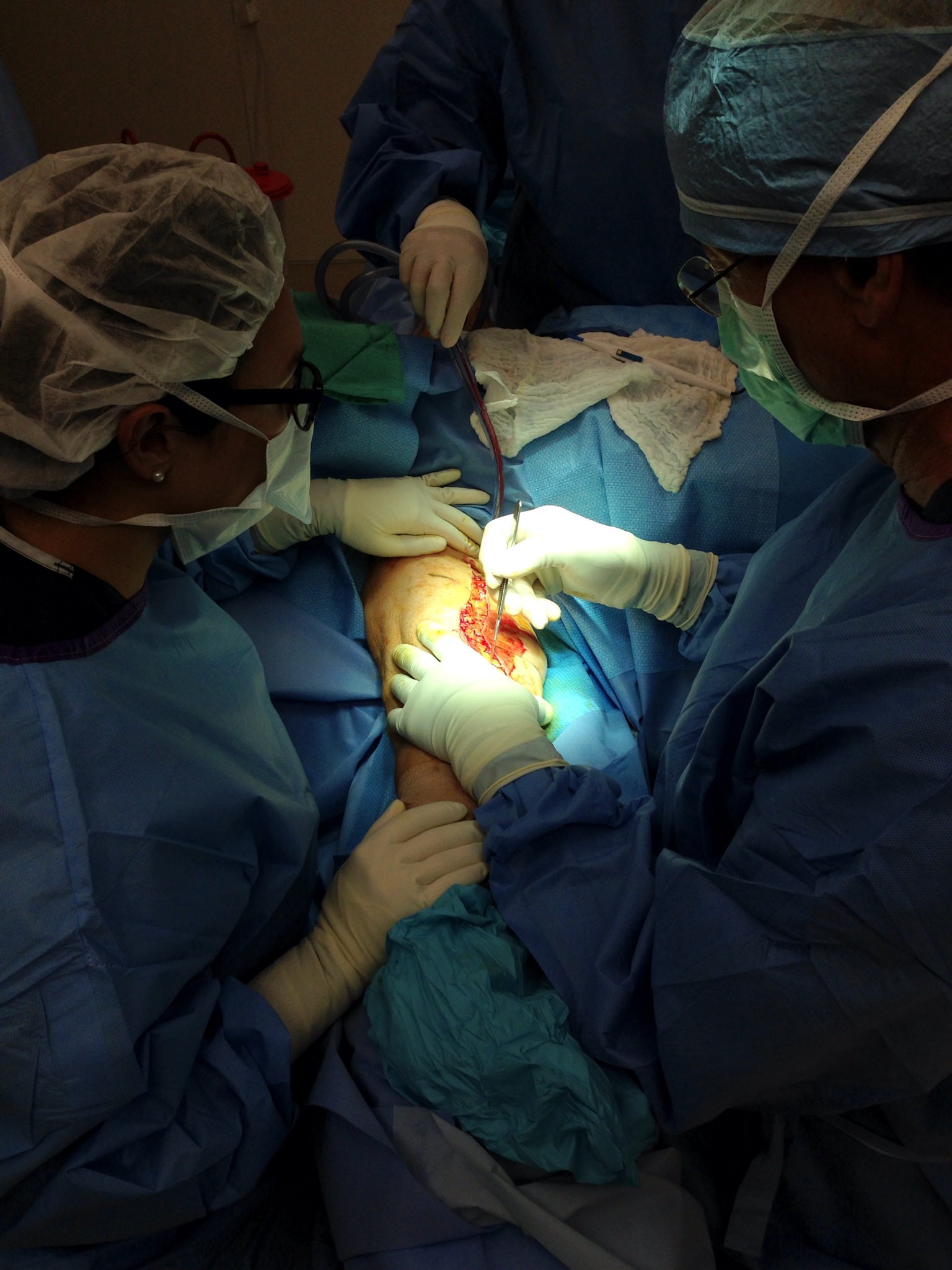
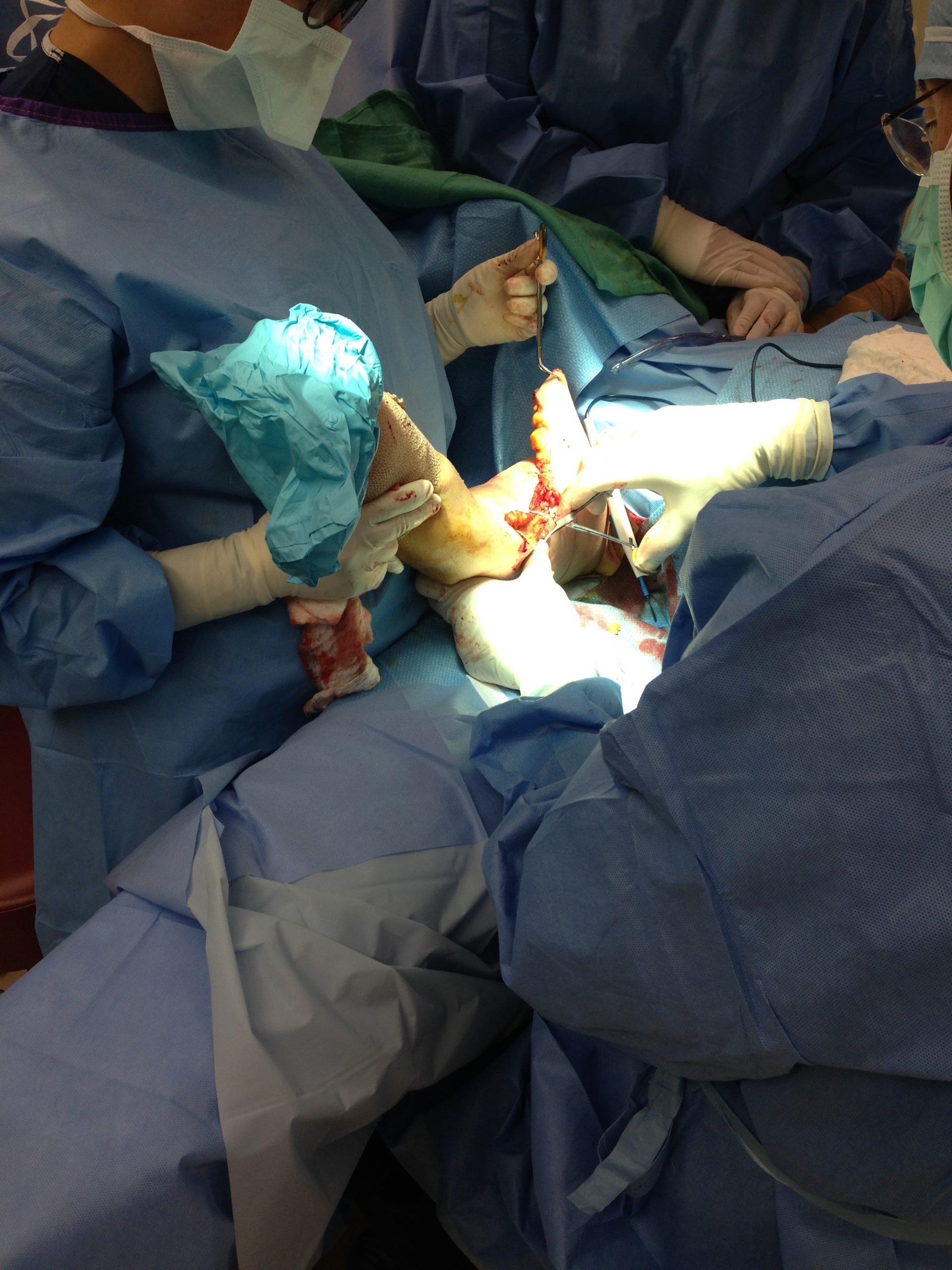
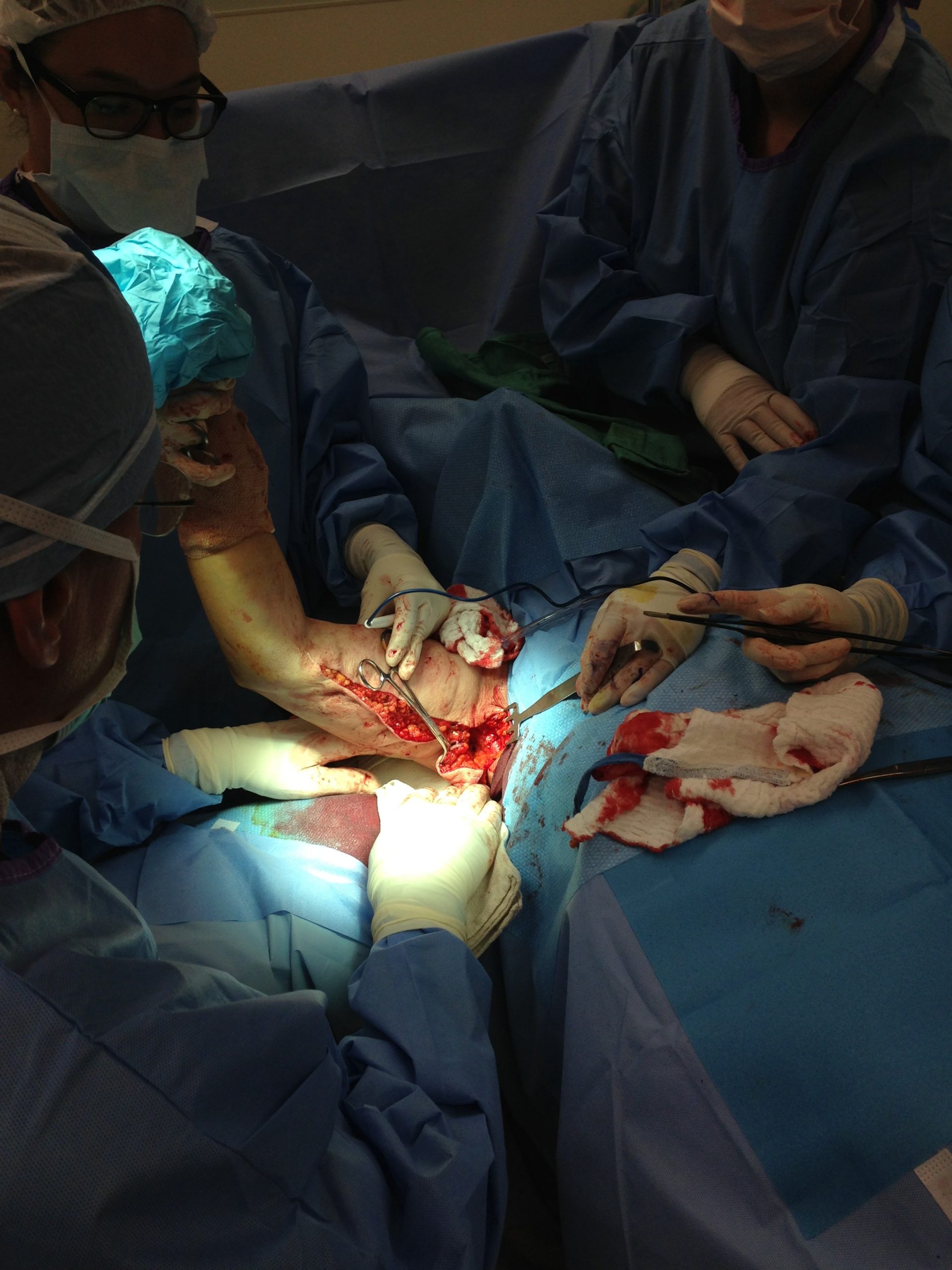
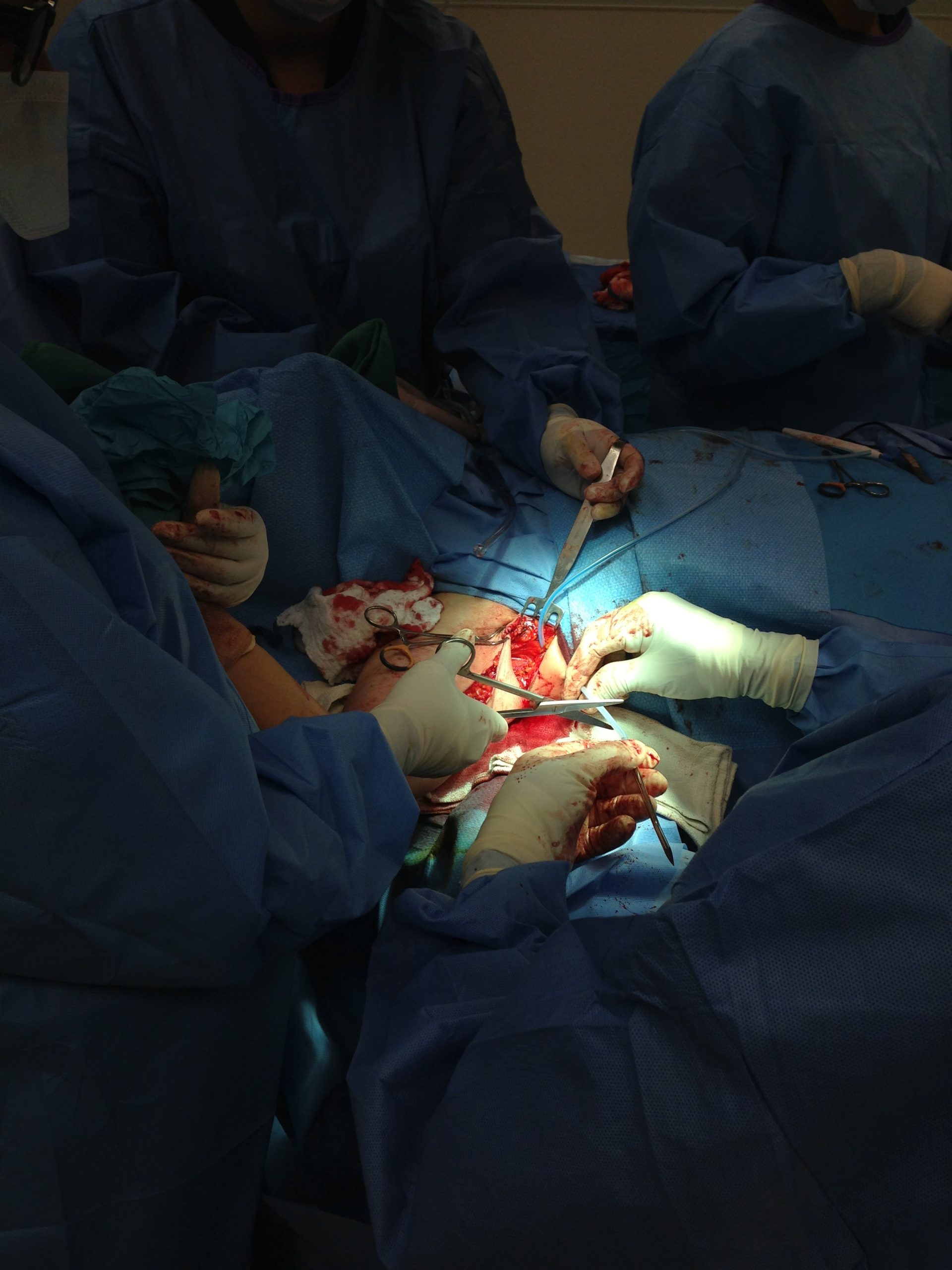
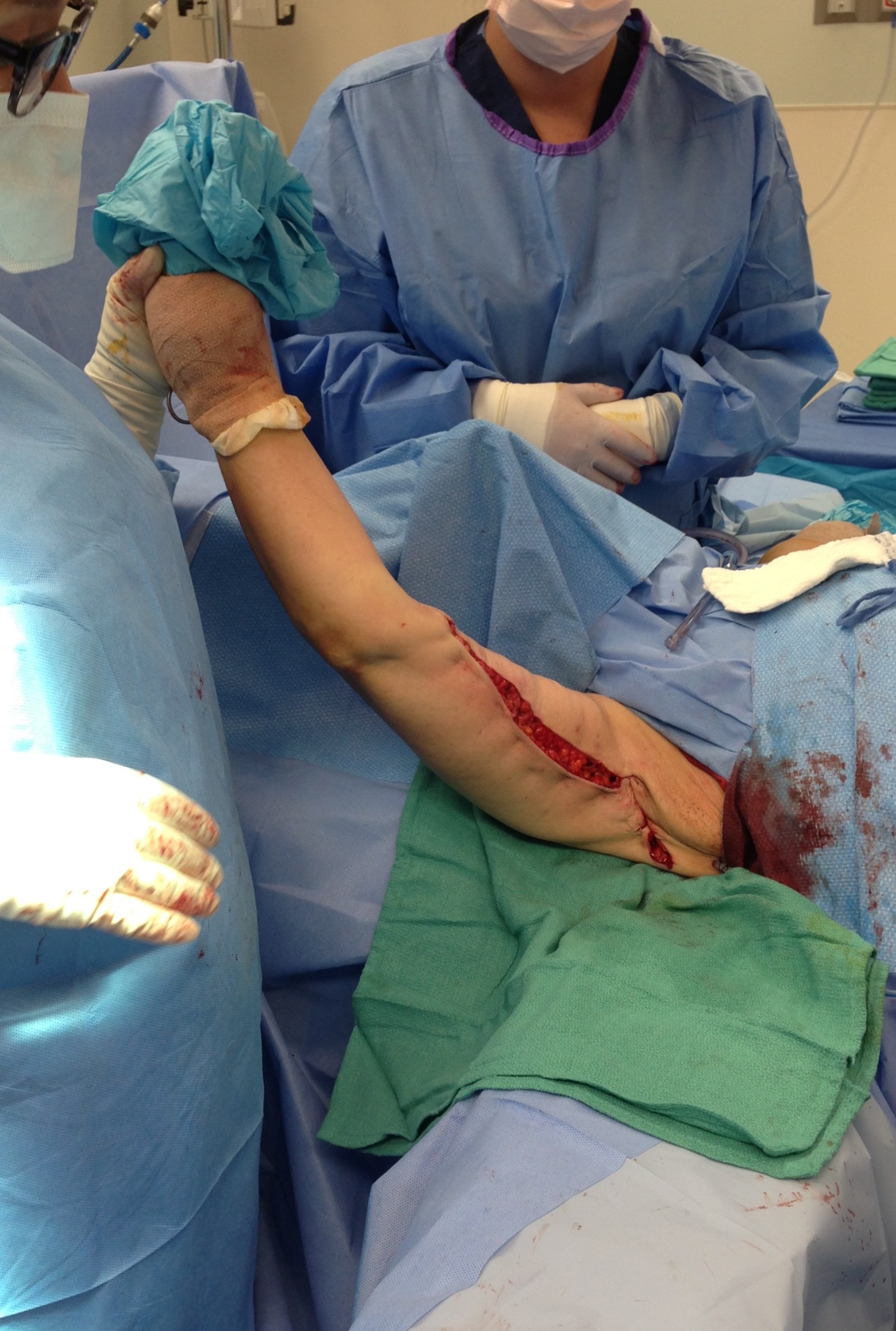
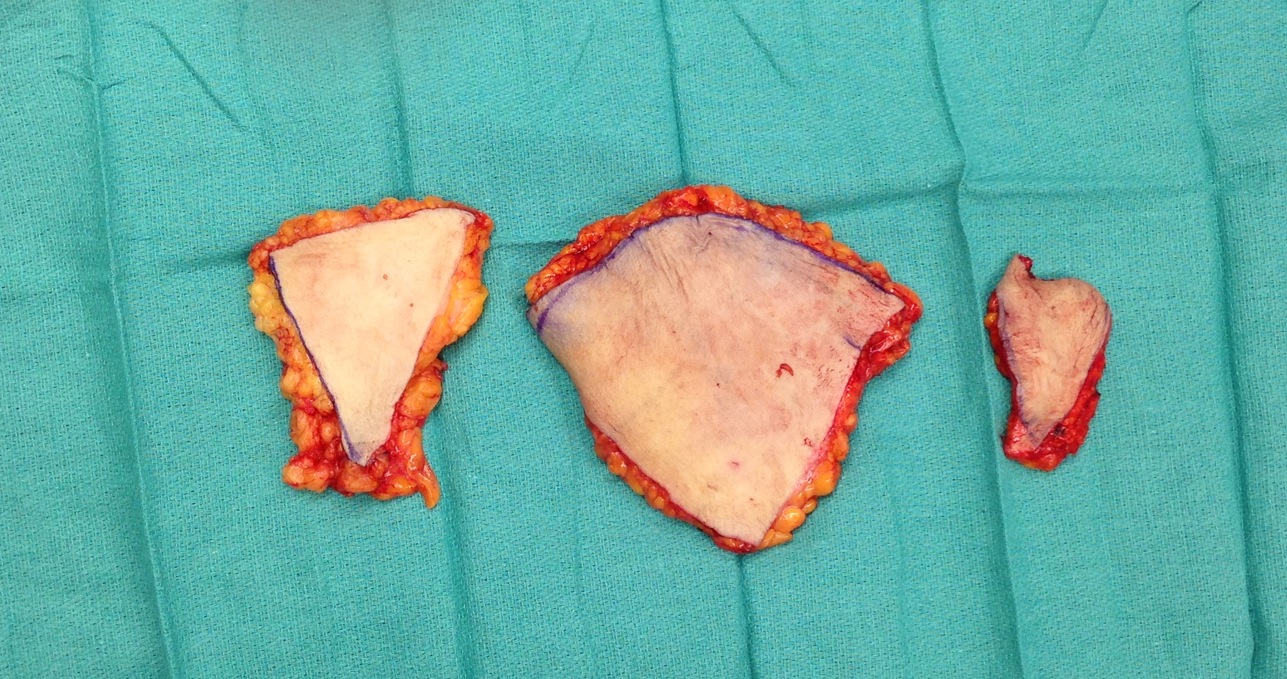
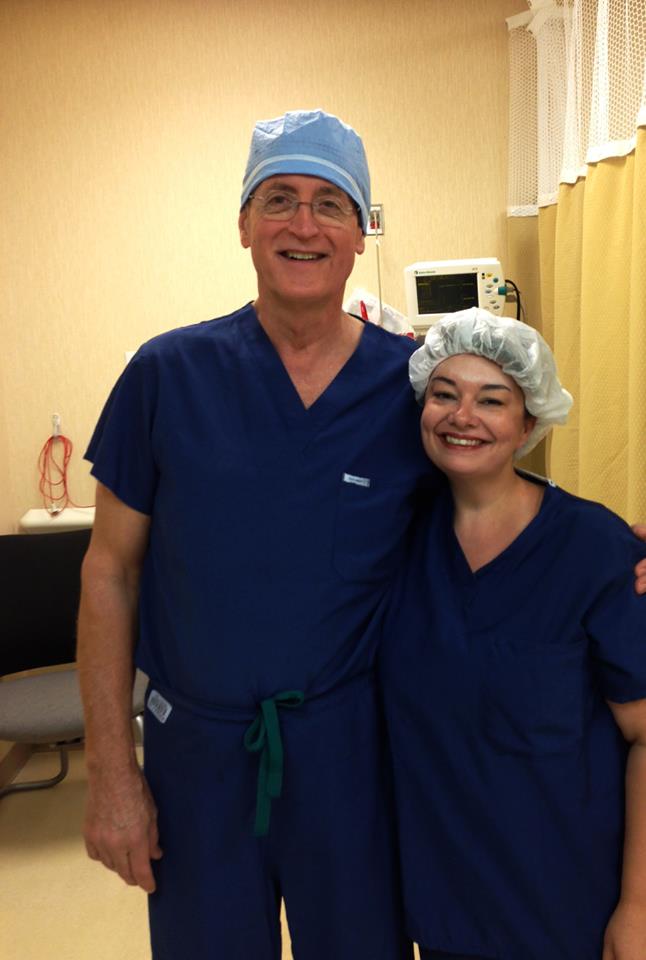
Leave a Reply